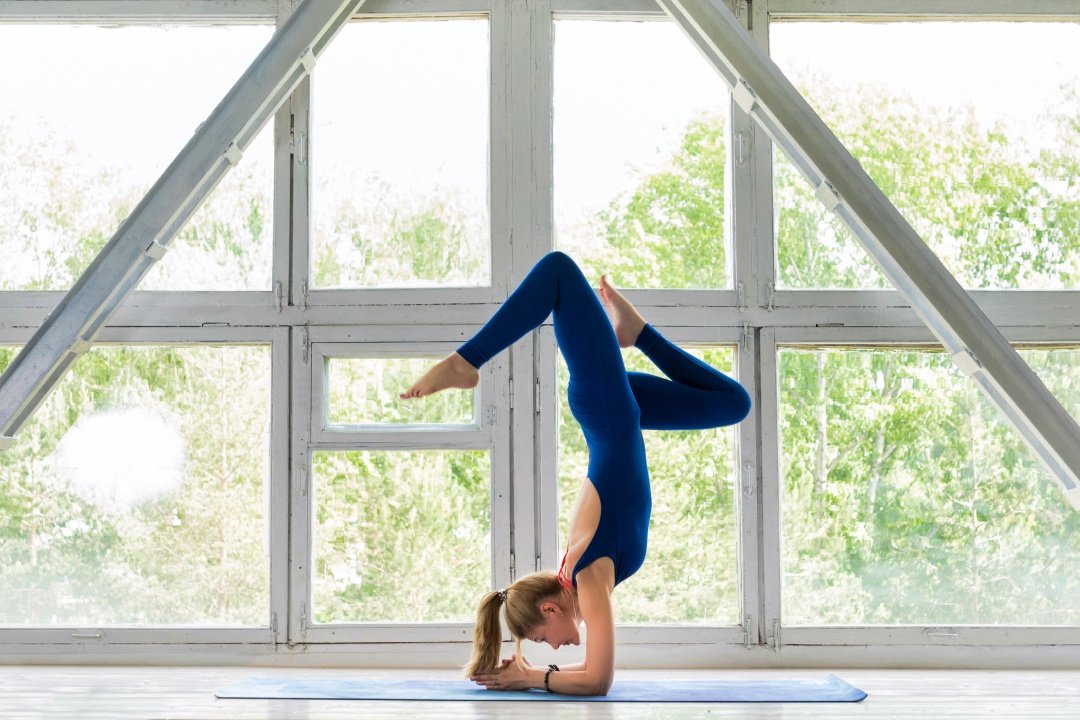Turning upside down in the yoga room can feel scary for many of us, even those who practice often.
It’s frightening partly because we can’t see what we’re doing, and partly because we’re not used to being upside down, so we lack confidence in this position. After all, we spend the first few years of our lives just learning to stay right side up! It’s also a little unsettling because everyone has different advice on inversions—and they all make it look so easy, even though we know it’s absolutely not, no matter what anyone says.
Once we learn how to build confidence around the unknown, practicing inversions can be freeing. If you’re fearful, start by following a few of these tips from me and the many other yogis I asked:
“What makes you feel confident coming into an inversion?”
Go Slow
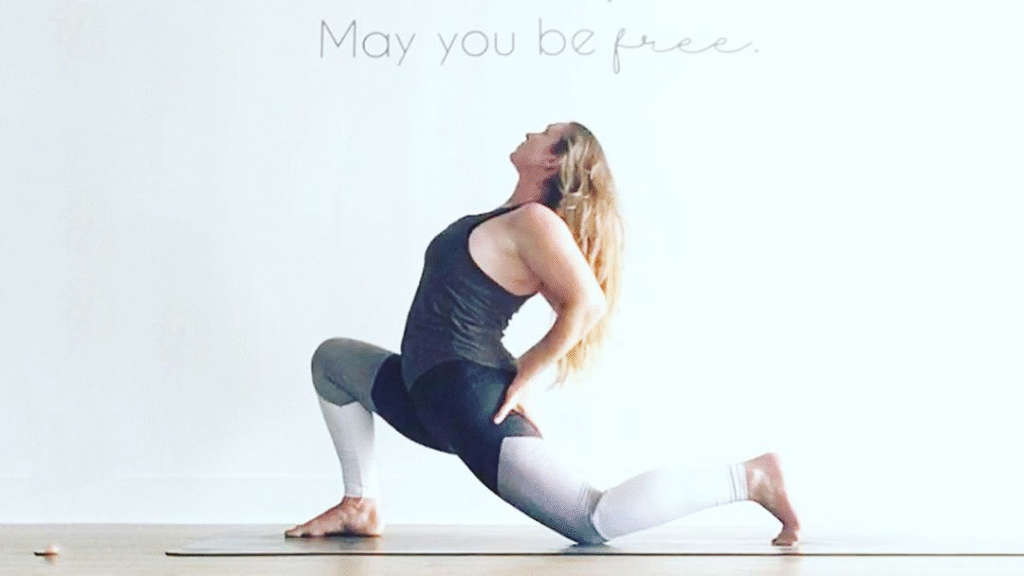
“A strong grip all the way through to my fingertips. I imagine that instead of being upside down, I’m holding the entire Earth in my hands above my head!” —Jeffrey Larocca
Have you ever felt like your whole world is being flipped upside down? That’s exactly what these postures prepare you for!
Often, going slowly and taking the transition step by step is the best way forward in life’s challenges. Applying that same approach to your yoga practice is key to building the confidence you want—both in inversions and in life.
Learn to listen to your intuition without letting fear stop you from trying inversions. This is about taking responsibility for your body. Think of your body as sending constant text messages through sensations. When you listen, you’ll know when to push and when to rest. If you were responsible for someone else’s safety, you’d pay attention—so show yourself the same care.
Core Control
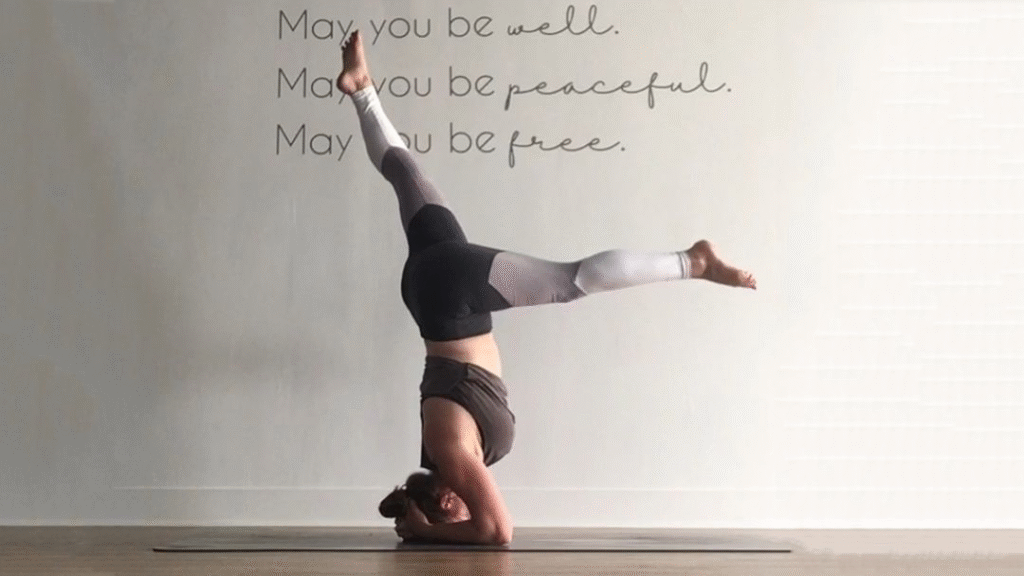
“Readiness in the core, and set shoulder blades.” —Korie Franciscus
Start with core work. Engage those muscles. Many yogis mentioned feeling strong in their shoulders, core, and hands before attempting any inversion—whether using a wall or a spotter.
Along with this, find a way to lift up without just throwing your legs in the air. Controlling your larger limbs as you rise feels less scary because you’re less likely to get hurt.
Professional Guidance
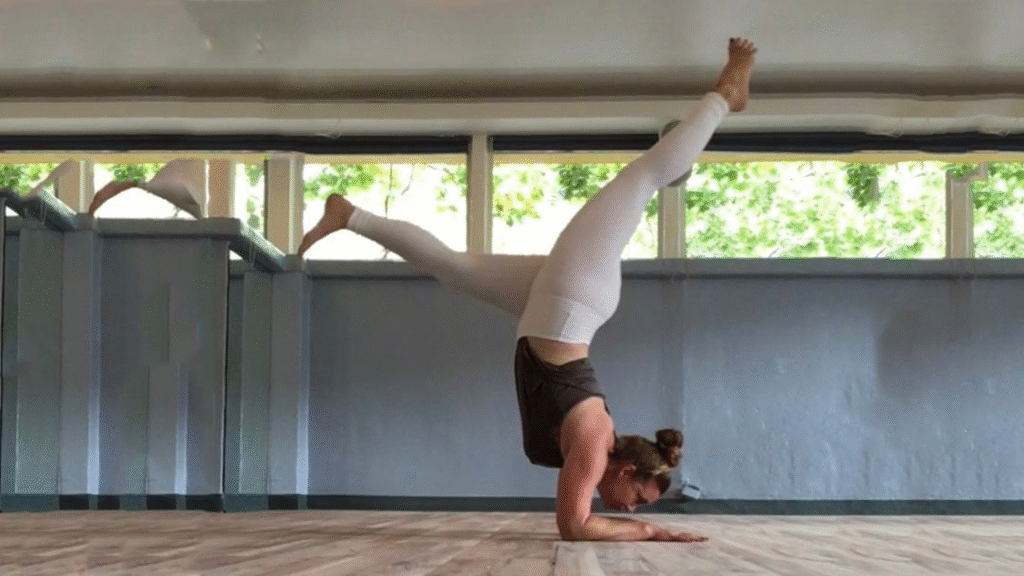
Talk to your instructor about private sessions focused on inversions so you get one-on-one attention. There’s always more than one way to do a pose, and your teacher can help find what works for you.
They might suggest props like straps or blocks. They’ll likely have you use a wall until you’re comfortable being upside down and can control your limbs as you lift. Then, they can spot you as you move away from the wall.
Self-Trust
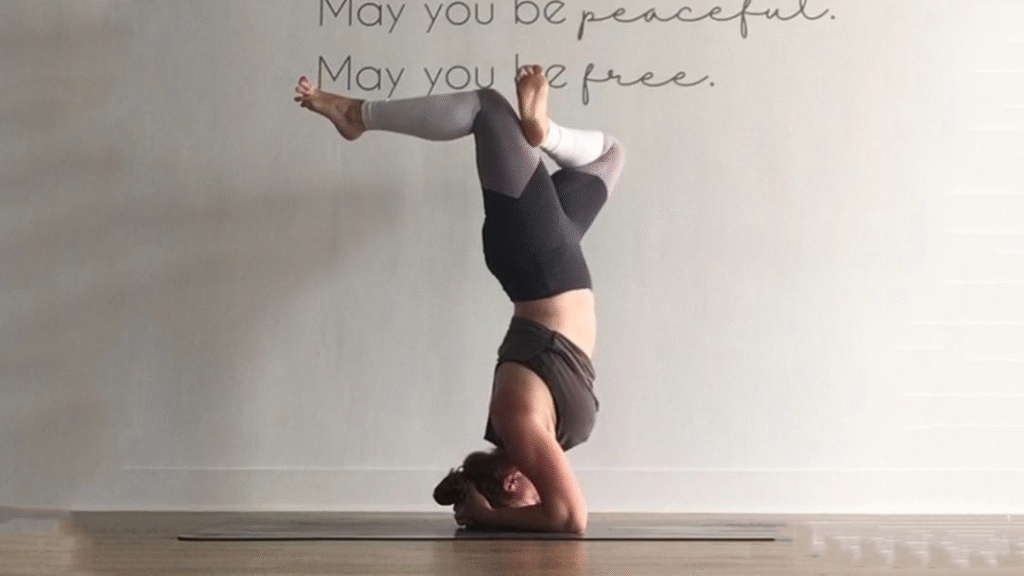
“Knowing I’m not going to hurt anyone around me!” —Lucas Wong
Build trust in yourself. In yoga (and life), fear of being upside down often comes from doubting whether you can catch yourself. This lack of trust may stem from ignoring your own needs in the past.
For a whole month, hold yourself accountable in small ways. If you say you’ll eat healthy, do it. If you say you’ll be somewhere at 6 PM, be there.
When you start showing up for yourself, you begin to trust your own reliability. Over time, this builds deeper confidence in your abilities. With that confidence, handling life’s ups and downs—both on and off the mat—gets easier (you might even find inversions matter less in your practice!).
Faith

“Faith, believing I’m strong enough.” —Elizabeth Davidman
Keep trying. Remember that even when you fall, slip up, or feel like life’s pushing you backward—it’s all strengthening you, building your toolkit.
Always stay safe, listen to your body’s signals to rest or step back, and have faith that when the time is right, you’ll get there!
The truth is, you can throw yourself into a handstand all day, but you’ll only hold it solidly when your body is ready.
So unroll your mat, find some wall space, fire up your core, tune into your body’s messages with a quick meditation, and get ready to turn your world upside down!
